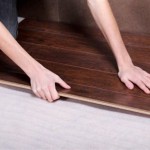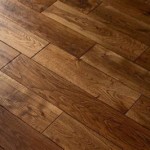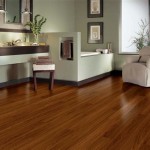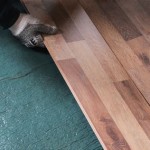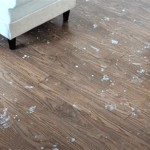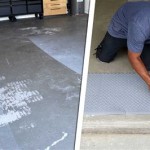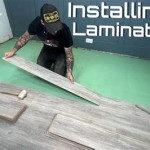Is Chipboard Flooring Good For Bathrooms? A Comprehensive Analysis
Chipboard, also known as particleboard, is an engineered wood product manufactured from wood chips, sawmill shavings, or even sawdust, and a synthetic resin or other suitable binder, which is pressed and extruded. It is commonly used in furniture construction, underlayment, and sometimes as a flooring material. However, its suitability for use in bathrooms, environments characterized by high humidity and frequent water exposure, is a complex question demanding thorough consideration.
The primary concern with using chipboard flooring in bathrooms stems from its inherent susceptibility to moisture damage. Unlike solid wood or some engineered wood products like plywood, chipboard is highly absorbent. When exposed to water, the wood particles swell, causing the board to degrade and lose structural integrity. This degradation can manifest as warping, crumbling, and ultimately, complete failure of the flooring. Therefore, a careful assessment of the advantages, disadvantages, and potential mitigation strategies is crucial before considering chipboard for bathroom flooring.
This article will delve into the properties of chipboard, examining its strengths and weaknesses in the context of bathroom environments. It will explore the various factors that contribute to its performance, or lack thereof, in humid conditions. Furthermore, the article will discuss alternative flooring solutions better suited for bathrooms, and outline the necessary precautions and treatments that might, under very specific circumstances, allow for the limited use of chipboard in less moisture-prone areas within the bathroom.
Understanding the Vulnerability of Chipboard to Moisture
Chipboard's composition makes it particularly vulnerable to moisture. The relatively loose arrangement of wood particles, held together by resin, provides ample opportunity for water to penetrate the material. This contrasts sharply with solid wood, where the tightly packed wood grain offers greater resistance to water absorption. Even engineered wood products like plywood, with their cross-laminated construction, offer better dimensional stability and moisture resistance than chipboard.
The type of resin used in the manufacturing process also plays a role in chipboard's moisture resistance. Some resins are more water-resistant than others, but even the most resistant resins cannot completely prevent water from penetrating the porous structure of the chipboard. Furthermore, the edges of chipboard are particularly susceptible to moisture damage, as they expose the raw wood particles directly to the environment. This is why edge banding is often used in furniture construction, but even with edge banding, water can still seep in over time, especially if the banding is not properly sealed.
The consequences of moisture exposure to chipboard flooring are significant. Swelling can cause the flooring to become uneven and create tripping hazards. As the chipboard degrades, it loses its load-bearing capacity, potentially leading to structural failure. Moreover, the damp environment created by waterlogged chipboard can promote the growth of mold and mildew, posing health risks to occupants. The cost of repairing or replacing damaged chipboard flooring can be substantial, making it a financially unwise choice for bathrooms.
Exploring the Limited Advantages of Chipboard Flooring
Despite its vulnerability to moisture, chipboard does offer a few advantages that might be considered in specific applications. The primary advantage is its cost-effectiveness. Chipboard is generally less expensive than solid wood, plywood, and many other flooring materials. This can make it an attractive option for budget-conscious homeowners or builders. However, this initial cost saving must be weighed against the potential for future repairs or replacements due to moisture damage.
Another potential advantage of chipboard is its smooth surface, which can provide a good base for applying other flooring materials, such as vinyl or laminate. However, this advantage is contingent upon the chipboard remaining dry and stable. If the chipboard swells or warps due to moisture exposure, it can compromise the integrity of the overlying flooring material. Therefore, using chipboard as an underlayment in a bathroom requires extreme caution and meticulous attention to waterproofing.
Finally, chipboard is relatively easy to work with. It can be cut, drilled, and fastened using standard woodworking tools. This can make installation easier for DIYers or contractors. However, proper installation techniques are crucial to minimize the risk of moisture damage. This includes sealing all edges and seams, and ensuring adequate ventilation to prevent moisture buildup.
Analyzing Alternatives and Mitigation Strategies
Given the inherent limitations of chipboard in bathroom environments, it is crucial to consider alternative flooring solutions that offer better moisture resistance. Several options are available, each with its own advantages and disadvantages. These include:
- Ceramic or Porcelain Tile: Tile is a popular choice for bathrooms due to its water resistance, durability, and wide range of aesthetic options.
- Vinyl Flooring: Vinyl flooring, particularly sheet vinyl and luxury vinyl planks (LVP), is highly resistant to water and relatively inexpensive.
- Stone Flooring: Natural stone, such as granite or slate, is a durable and water-resistant option, but it can be more expensive than other materials.
- Engineered Wood Flooring: Some types of engineered wood flooring, particularly those with a waterproof core, can be suitable for bathrooms, but careful selection and installation are essential.
If, despite the risks, chipboard is chosen for use in a bathroom (for example, as subflooring rather visible finished flooring), rigorous mitigation strategies are essential. These strategies must encompass several key areas:
- Waterproofing: The chipboard must be thoroughly sealed with a high-quality waterproofing membrane. This includes sealing all edges, seams, and fastener holes. Multiple coats may be necessary to ensure complete coverage.
- Ventilation: Adequate ventilation is crucial to prevent moisture buildup in the bathroom. This includes installing a powerful exhaust fan and ensuring proper airflow throughout the room.
- Maintenance: Regular maintenance is essential to prevent water damage. This includes promptly cleaning up spills, monitoring for leaks, and resealing the chipboard as needed.
- Limited Exposure: If possible, restrict chipboard's use to areas less prone to direct water exposure. For instance, it might be used for subflooring in a powder room rather than directly under a shower. Even then, extreme precautions are required.
Furthermore, using a moisture-resistant grade of chipboard, if available, can offer some additional protection. However, even moisture-resistant chipboard is not completely waterproof and will still degrade if exposed to prolonged moisture. It's crucial to understand that no amount of sealant can truly make chipboard a reliable choice for areas of high water exposure.
Ultimately, using chipboard flooring in bathrooms is a decision that should be approached with extreme caution. While it may offer some cost savings upfront, the potential for moisture damage and the need for costly repairs or replacements outweigh the benefits in most cases. Choosing a more water-resistant flooring material is generally a wiser investment in the long run, ensuring a durable and healthy bathroom environment. Diligence in waterproofing and ventilation, while potentially mitigating some risk, cannot fully compensate for chipboard's inherent vulnerability.

Water Damage Floating Chipboard Flooring Tilers Forums

Which Is Better Plywood Or Chipboard Sub Floor Wood And Beyond Blog

Water Damage Floating Chipboard Flooring Tilers Forums

Chipboard For Floors Blending Durability And Practicality

Tiling On Wooden Floors Part 4 Overboarding Bathroom Guru

How To Lay Chipboard Flooring Checkatrade

Water Damage Floating Chipboard Flooring Tilers Forums

Chipboard Flooring And Vinyl Plank Tiles Bathroom Renovation 05 Diy Vlog 20

Blog Expert Advice How To Tile Onto Wood Plywood Or Chipboard

T G Moisture Resistant Chipboard P5 2400 X 600 18mm Rgb
See Also
